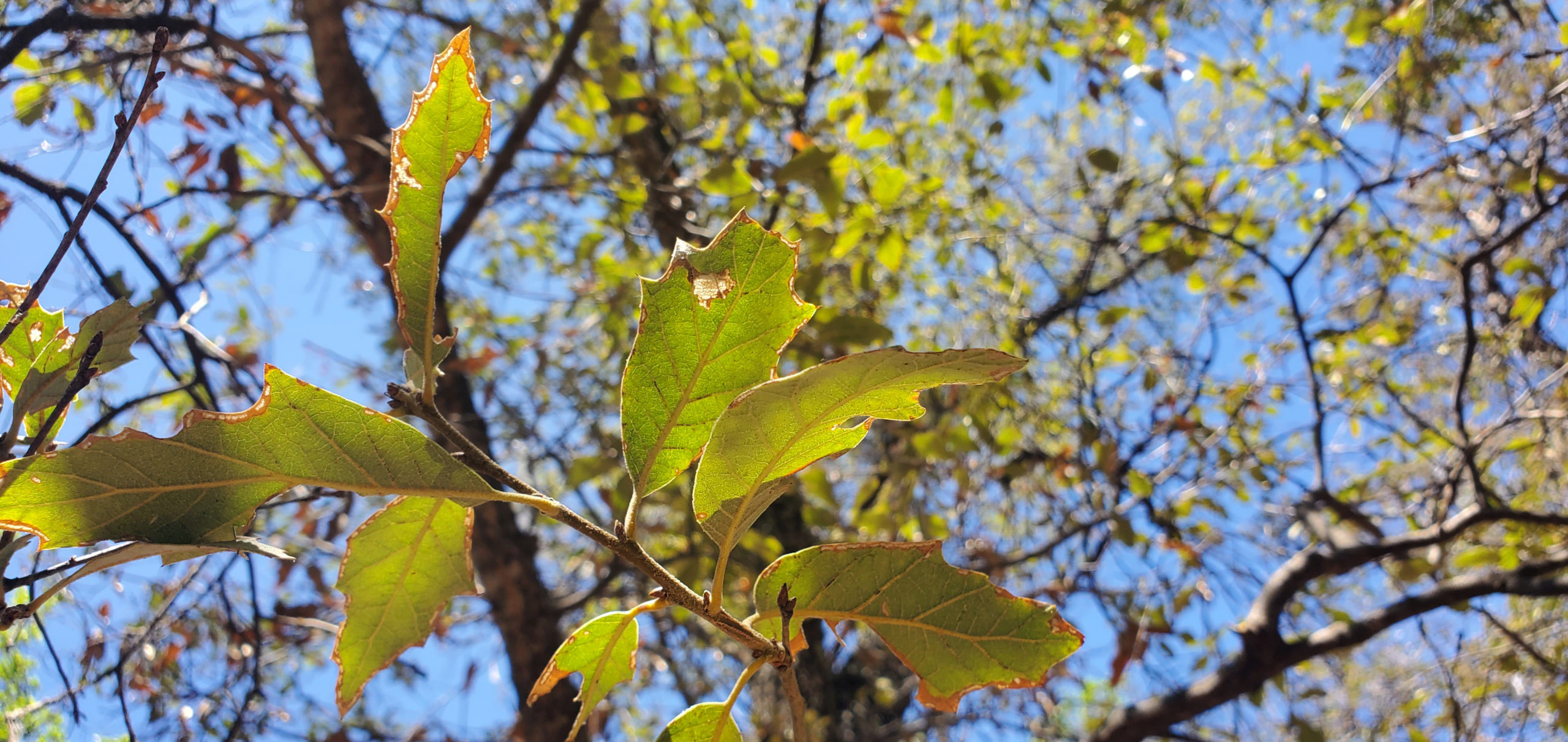In West Texas’ Big Bend National Park, a team of researchers stumbled upon a 30-foot tall tree suffering from fire damage and a fungal infection. To their astonishment, they found that the weary-looking tree was actually a rare oak tree thought to be extinct for over a decade.
The oak tree, known by the scientific name Quercus tardifolia, was last seen alive in 2011. It was discovered by a group of nine researchers organized by the Morton Arboretum and the United States Botanic Garden.
Michael Eason, associate director of conservation and collections at the San Antonio Botanical Gardens and a state botanist for the Native Plant Society of Texas, was part of the team that made the discovery. He spoke with the Texas Standard about the rare find. Listen to the interview above or read the transcript below.
This transcript has been edited lightly for clarity:
Texas Standard: Congratulations on finding this oak tree. Tell us a little bit about the tree itself. What does it look like?
Michael Eason: Well, this particular one is, I would say, about 30 feet tall. There’s definitely some fungal damage and some old fire issues that had come through there. I would imagine most people probably wouldn’t recognize it if they walked by it.
Was this a specific variety of oak tree that you thought was extinct or was it just any oak tree?
No, this was Quercus tardifolia, the late live oak. It was last reported alive around 2011 and that was at another location. And so, we decided we would head back out there and see if we could locate it. Well, that sounds simple, but we actually had a team of eight people that came in from around the United States and an additional person, a ninth person that was local that helped out with camp set up and everything else.
What made you think there might be some specimen still alive out there?
Well, because no one had really ever done a systematic search. There have been people that have reported [seeing it] but they never really went out with a team where they tracked all of their movements. We were very systematic in where we went based upon previous experience and knowledge of the Chisos mountains where we thought it might occur and that knowledge paid off.
What was the moment like when you actually located the tree? That must have been something.
Yeah, there’s a moment of astonishment. You’re flabbergasted, for one, and you are speechless for a second. But it’s all happening within just a few seconds. And then immediately, I called out to the rest of the team members and we started kind of rallying around the tree. That’s a pretty remarkable find.
But I understand that the tree you discovered is not in great health. Is it going to be able to stay alive?
Yes. It’s not in the best of health, but you can say that about a lot of trees and they may end up living 10 or 20 years. This one’s looking pretty bad. We are planning to head back out there in the winter and take cuttings which we’ll use for grafting materials. And we’ll be able to propagate that later on and continue that until we have enough where we’re sharing amongst botanical gardens and in the United States. And then hopefully, we’ll be able to return some of these to Big Bend National Park in the future.
If you have one tree, does that necessarily mean you are likely to find another?
Yes. We’ll find some more. Undoubtedly, if we went out and found this one, and with the park being so popular — so many people walk through there— I’m confident that there is more out there.
What comes next for this tree? Will you search for others out there? What is next on your agenda?
Well, we will definitely be searching for others. We definitely want to get into northern Mexico. There are some vague reports of the tree down in Mexico. And then also just searching the other mountain ranges within West Texas. So, the Davis Mountains, particularly, and looking for the species in other areas. You know, I truly believe that it could have been more widespread. It’s just that so many people in the past have sort of lumped these certain trees that they see and they’ll just say, no, it’s a hybrid and keep walking. And no one really systematically collected these oaks and really studied them. And that’s what we’re doing here.
More broadly speaking, what does this say about the ecosystem there in Big Bend National Park, or does it say anything larger about the environment there?
I’d like to emphasize that Big Bend National Park has over 500,000 visitors yearly at this point. It has been studied extensively by botanists and biologists of all sectors. And for us to go out and we found this – we found another species that appears to be a new species for the United States. We also found additional locations of some pretty rare orchids. So, it just kind of goes to show that if you put the people with the right knowledge in the right place at the right time, there’s more to discover out there. So, we’re definitely looking forward to going back out and doing some more of these trips.














